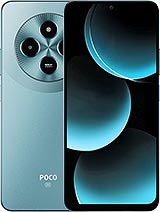Moto G86 Power alternatives
Tap above to see alternatives.
Samsung Galaxy F14 4G alternatives
Tap above to see alternatives.
Moto G86 Power

Moto G86 Power
-
Dimensity 7400
4 nm
-
6720 mAh
33W
-
6.67"
1220 x 2712 pixels
-
50 MP
4K@30/60fps
- Specs
Samsung Galaxy F14 4G

Samsung Galaxy F14 4G
-
Snapdragon 680
6 nm
-
5000 mAh
25W
-
6.7"
1080x2400 pixels
-
50 MP
1080p@30fps
- Specs
4x2.6 GHz Cortex-A78
4x2.0 GHz Cortex-A55
2.4 GHz, Quad core, Kryo 265
1.9 GHz, Quad core, Kryo 265
f/1.88, 25mm (wide), 1/1.95", 0.8µm, Sony LYT600, dual pixel PDAF, OIS
8 MP
f/2.2, 12mm, 118˚ (ultrawide), 1.12µm, AF
f/1.8, (wide)
2 MP
f/2.4, (depth)
2 MP
f/2.4, (macro)
1080p@30/60/120fps, gyro-EIS
f/2.2, (wide), 0.7µm
f/2.0, (wide)
1080p@30fps, gyro-EIS
SIM1: Nano, SIM2: Nano (Hybrid)
SIM1: Nano, SIM2: Nano
10 5G bands
n1, n3, n5, n8, n28, n38, n40, n41, n77, n78
In this performance comparison, the Moto G86 Power with its MediaTek Dimensity 7400 (4nm) performs better than the Samsung Galaxy F14 4G with the Qualcomm Snapdragon 680 (6nm), thanks to superior chipset efficiency.
Samsung Galaxy F14 4G offers 2 years of OS updates, whereas Moto G86 Power provides 1 years. For security updates, Samsung Galaxy F14 4G offers 4 years of support compared to Moto G86 Power's 3 years.
Moto G86 Power features a superior AMOLED display, while Samsung Galaxy F14 4G comes with an LCD panel. In terms of smoothness, Moto G86 Power offers a higher 120 Hz refresh rate, ensuring fluid scrolling and animations. Both devices deliver the same brightness level at nits. Notably, Moto G86 Power offers a higher screen resolution, resulting in sharper visuals and more detailed content.
Moto G86 Power comes with a larger 6720 mAh battery, which may offer longer usage on a single charge. Moto G86 Power also supports faster wired charging at 33W, compared to 25W on Samsung Galaxy F14 4G.
Moto G86 Power includes an IP69 rating, while Samsung Galaxy F14 4G lacks an official IP rating.
¹ Scores can vary even with the same chipset due to RAM, thermals, and software optimization.










